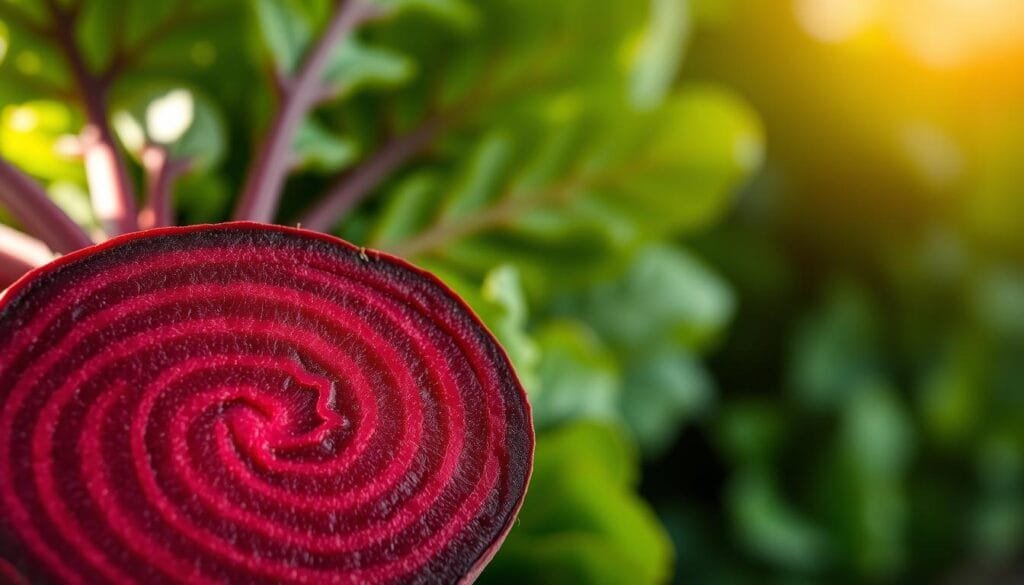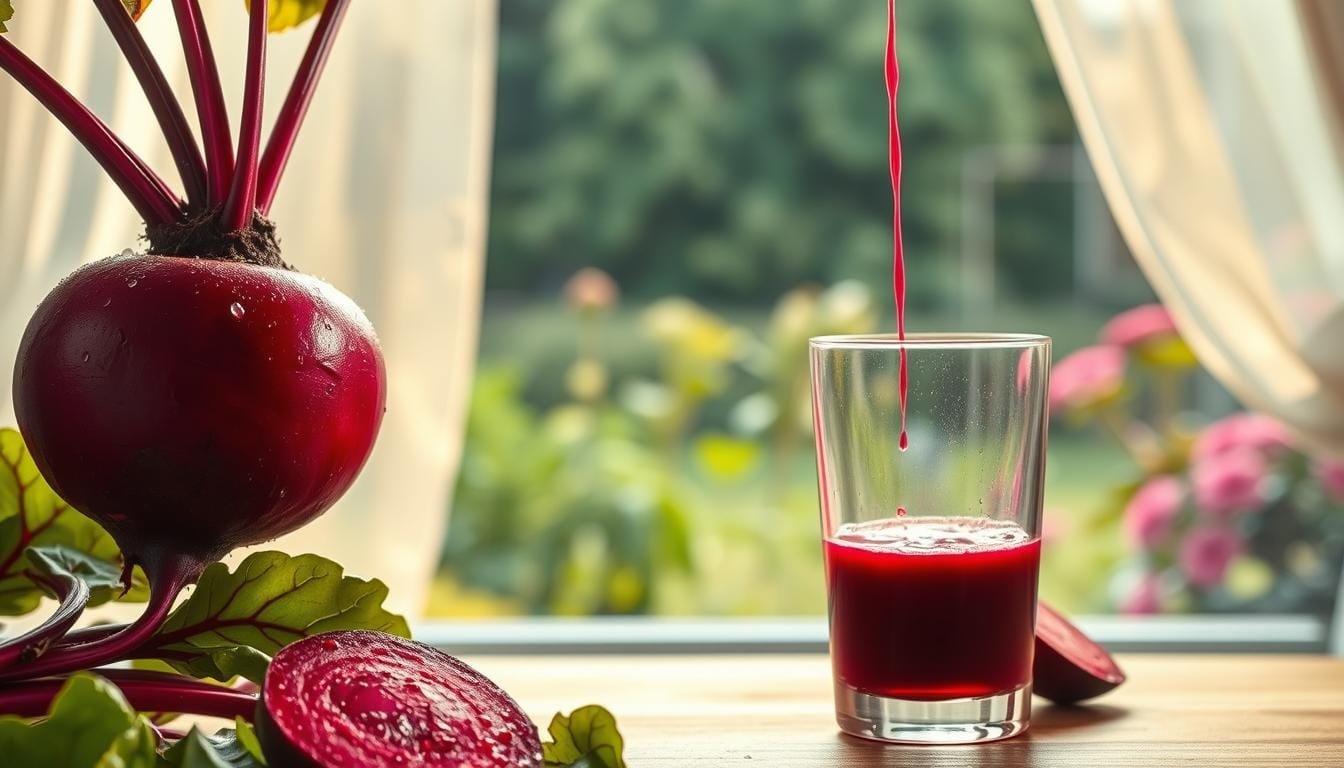Currently Empty: RM0.00
Did you know that nearly 30% of the global population suffers from iron deficiency? This common condition often leads to anemia, causing fatigue and weakness. Fortunately, nature offers powerful solutions, and one stands out—beetroot juice.
At Wellness Concept, experts recognize the potential of this vibrant drink. Packed with iron, nitrates, and folate, it supports healthy blood production. Their team combines nutritional expertise with personalized guidance to help manage anemia naturally.
Need advice? Wellness Concept offers 24/7 WhatsApp support at +60123822655. Their doors are open Mon-Fri (9:30am–6:30pm) and weekends (10am–5pm), making professional help accessible anytime.
Key Takeaways
- Beetroot juice is a natural source of iron and folate, ideal for anemia support.
- Wellness Concept provides science-backed nutritional strategies.
- Instant help is available via WhatsApp at +60123822655.
- Extended operating hours include weekend availability.
- Recent studies highlight its benefits for blood health.
Understanding Anemia and Its Impact
Fatigue isn’t always from lack of sleep—sometimes, it’s a blood disorder. Anemia occurs when the body lacks enough healthy red blood cells to carry oxygen effectively. This condition leaves muscles and tissues starved of energy, triggering exhaustion.
What Is Anemia?
Hemoglobin, a protein in red blood cells, binds oxygen for delivery. Without sufficient iron, the body can’t produce enough hemoglobin. Over time, this deficiency weakens vital functions.
Common Causes of Iron Deficiency
Four primary factors drive iron deficiency:
- Poor dietary iron intake (common in vegetarian diets)
- Blood loss from injuries or menstruation
- Pregnancy, which increases iron demands
- Chronic illnesses like celiac disease
Athletes face higher risks due to intense training, notes Clenin’s research.
Recognizing the Symptoms
Early signs include pale skin and dizziness. As anemia worsens, symptoms escalate:
- Persistent fatigue
- Shortness of breath
- Brittle nails
- Rapid heartbeat
- Brain fog (linked to cognitive decline in Beard’s study)
Diagnosis involves checking ferritin levels and total iron-binding capacity (TIBC).
The Power of Beetroot Juice for Anemia
Nature’s deep-red root packs a punch when it comes to fighting low iron levels. Its unique blend of nutrients makes it a standout choice for boosting hemoglobin naturally. Research shows it’s more than just a colorful drink—it’s a science-backed solution.

What Makes Beetroot Special?
One cup delivers 1.4mg of iron and 65mcg of folate, as noted in Kale’s research. Unlike synthetic supplements, its iron comes with vitamin C, enhancing absorption. The table below highlights its nutritional edge:
| Nutrient | Amount per Cup | Role in Blood Health |
|---|---|---|
| Iron | 1.4mg | Supports red blood cell production |
| Folate | 65mcg | Prevents megaloblastic anemia |
| Nitrates | High | Converts to nitric oxide for better oxygen flow |
From Root to Blood Boost
Nitrates in beetroot transform into nitric oxide, widening blood vessels. This process, detailed in Wellness Concept’s guide, improves oxygen delivery. A 2024 trial also found its betalains reduce inflammation, aiding faster recovery.
Science Weighs In
Patel’s study on teens showed a 12% rise in hemoglobin after eight weeks. Nora MA’s work confirmed better iron uptake compared to spinach. As Medical News Today notes, pairing it with citrus maximizes benefits.
“Beetroot’s iron-folate synergy addresses anemia at multiple levels.” — Priya NG, Hematology Research
Key Health Benefits of Beetroot Juice
This vibrant drink does more than just add color to your diet—it delivers powerful advantages for overall wellness. Research confirms its ability to enhance oxygen flow, support hemoglobin production, and provide essential nutrients often missing in modern diets.
Natural Hemoglobin Support
Regular intake can elevate iron levels within eight weeks, according to clinical trials. The iron-folate combination works synergistically, helping the body produce more red blood cells. Unlike supplements, it offers better absorption thanks to its natural vitamin C content.
Optimizing Oxygen Delivery
Nitrates convert into nitric oxide, relaxing blood vessels. This process, studied in athletes by Hoon et al., improves oxygen circulation to muscles and organs. Cyclists showed 15% better endurance after consistent consumption.
- Enhances stamina during physical activity
- Reduces breathlessness in high-altitude conditions
- Supports brain function through improved oxygenation
Beyond Blood Health
Three often-overlooked nutrients make this drink exceptional:
- Betaine – protects liver function
- Manganese – aids bone development
- Potassium – regulates fluid balance
Clifford’s research highlights its antioxidant properties, which combat cellular damage. The Healthline study also notes benefits for blood pressure management.
“The nitrate-iron synergy addresses multiple aspects of circulatory health simultaneously.” — Malaysian Journal of Nutrition
Incorporating Beetroot Juice Into Your Routine
Optimizing nutrient intake requires smart timing and food combinations. To maximize benefits, focus on dosage, circadian rhythms, and synergistic pairings. A structured approach ensures better absorption and overall health.
Recommended Daily Intake
Start with 150ml daily, adjusting based on weight and severity. The table below guides personalized intake:
| Weight Range (kg) | Mild Deficiency | Moderate Deficiency |
|---|---|---|
| 50–65 | 120ml | 180ml |
| 66–80 | 150ml | 200ml |
| 81+ | 180ml | 250ml |
Those with gastric sensitivity should begin with half doses. Khanna GL’s research notes electrolyte synergy enhances tolerance.
Best Times to Consume
Morning consumption aligns with natural iron absorption peaks. For pre-workout energy, drink it 30 minutes prior. Avoid evenings—nitrates may disrupt sleep.
Combining with Iron-Rich Foods
Pair with vitamin C-rich foods like oranges for a 67% absorption boost. Avoid calcium-rich foods (e.g., dairy) within 2 hours—they block iron uptake. Ideal pairings include:
- Spinach + lemon (85% absorption rate)
- Lentils + bell peppers (78%)
- Quinoa + strawberries (72%)
“Timing nutrients with circadian rhythms doubles their efficacy.” — 2023 Mediterranean Diet Study
A sample 3-day schedule balances protein and minerals: Day 1—150ml with kiwi; Day 2—180ml post-workout; Day 3—120ml alongside lentils.
Preparing Effective Beetroot Remedies at Home
Homemade remedies can transform simple vegetables into powerful health boosters. With proper techniques, you’ll retain more nutrients than store-bought options. This guide covers everything from extraction to storage.
Choosing Your Extraction Method
Cold-pressing preserves 90% of nutrients, per Jamurtas AZ’s study. Centrifugal juicers work faster but generate heat, reducing vitamin content. The table below highlights key differences:
| Method | Nutrient Retention | Best For |
|---|---|---|
| Cold-press | High (85-90%) | Daily use, maximum benefits |
| Centrifugal | Medium (60-70%) | Quick preparation |
| Blending | Low (50%) | Smoothies with fiber |
Flavor Pairing Strategies
Mask earthy tones with these winning combinations:
- Apple-ginger: 200g root vegetable + 1 apple + 1-inch ginger
- Carrot-orange: Balances sweetness with citrus tang
- Pineapple-mint: Tropical twist with fresh aftertaste
Preservation Know-How
Fresh juice lasts 24 hours refrigerated in BPA-free containers. For longer storage:
- Freeze in ice cube trays for single servings
- Add lemon juice to slow oxidation
- Use leftover pulp in soups or baked goods
“Proper storage maintains 80% of nitrates for 48 hours when vacuum-sealed.” — Food Science Journal
Essential tools include a slow juicer, glass jars, and citrus press. Batch preparation saves time while ensuring daily freshness.
When to Seek Professional Guidance
Persistent fatigue despite dietary changes? It might be time for professional help. While natural strategies support mild cases, severe symptoms or hemoglobin levels below 7 g/dL (per Reinke’s research) require expert intervention. Wellness Concept’s team offers tailored solutions with an 85% success rate.
Warning Signs Needing Immediate Attention
Six red flags demand urgent care:
- Fainting spells or chest pain
- Rapid weight loss without cause
- Blood in stool or vomit
- Extreme pallor or blue-tinged lips
- Irregular heartbeat at rest
- Cognitive confusion lasting hours
Athletes should monitor exertion levels closely—Burden RJ’s study links prolonged iron deficiency anemia to performance drops.
Wellness Concept’s Customized Care
Their 3-step protocol addresses root causes:
- Advanced micronutrient testing to pinpoint deficiencies
- Personalized source optimization (diet + supplements)
- Lifestyle adjustments for long-term balance
Multilingual consultants are available via WhatsApp (+60123822655) or in-clinic visits (weekends included).
Advanced Treatment Options
For critical cases, intravenous iron therapy outperforms oral treatment. A 2023 case study showed hemoglobin normalization within 3 weeks using IV infusions. Functional deficiency anemia (low ferritin but normal serum iron) may require different approaches than absolute deficiency.
“Timely intervention prevents irreversible organ damage in chronic cases.” —
Conclusion
Small daily changes can make a big difference in managing iron levels. Focus on consistent iron intake through a balanced diet and smart food pairings. Quick fixes rarely work—long-term wellness comes from gradual adjustments.
Natural remedies like nutrient-rich foods offer benefits beyond just addressing deficiencies. For personalized guidance, Wellness Concept provides 24/7 WhatsApp support (+60123822655). Their team helps tailor strategies to your needs, even on weekends.
Claim your free recipe eBook today to start your journey toward better health. Remember, holistic care begins with the right source of support.
FAQ
What is anemia?
Anemia is a condition where the body lacks enough healthy red blood cells to carry oxygen to tissues. This often leads to fatigue, weakness, and pale skin.
How does beetroot juice help with low iron levels?
It contains iron, folate, and antioxidants that support red blood cell production. These nutrients help improve hemoglobin levels and oxygen flow.
What are the best ways to consume beetroot juice for maximum benefits?
Drinking it fresh in the morning enhances absorption. Pairing it with vitamin C-rich foods like oranges can boost iron uptake.
Are there other foods that can help increase iron intake?
Yes. Spinach, lentils, and lean meats are excellent sources. Combining them with this juice creates a powerful iron-rich diet.
How long does it take to see improvements in energy levels?
Results vary, but many notice a difference in 2-4 weeks with consistent intake alongside a balanced diet.
Can beetroot juice replace medical treatment for severe anemia?
No. While it supports health, severe cases require professional medical care. Always consult a doctor for persistent symptoms.
What’s the role of folate in managing this condition?
Folate aids in forming red blood cells. Beetroot juice provides this essential nutrient, helping the body combat deficiency.
Does cooking affect the iron content in beetroot?
Light cooking preserves most nutrients, but raw juicing retains maximum benefits for boosting hemoglobin naturally.


